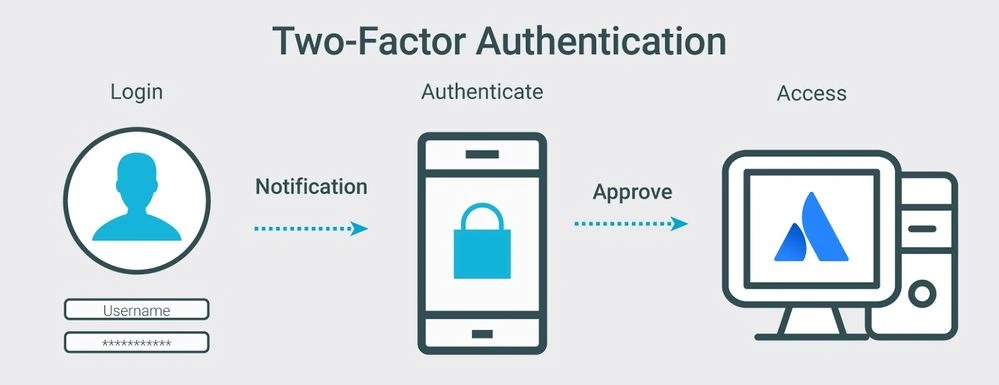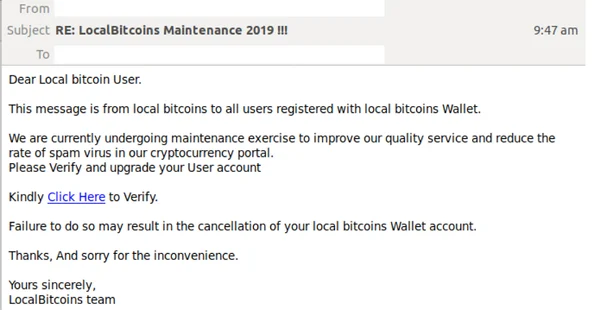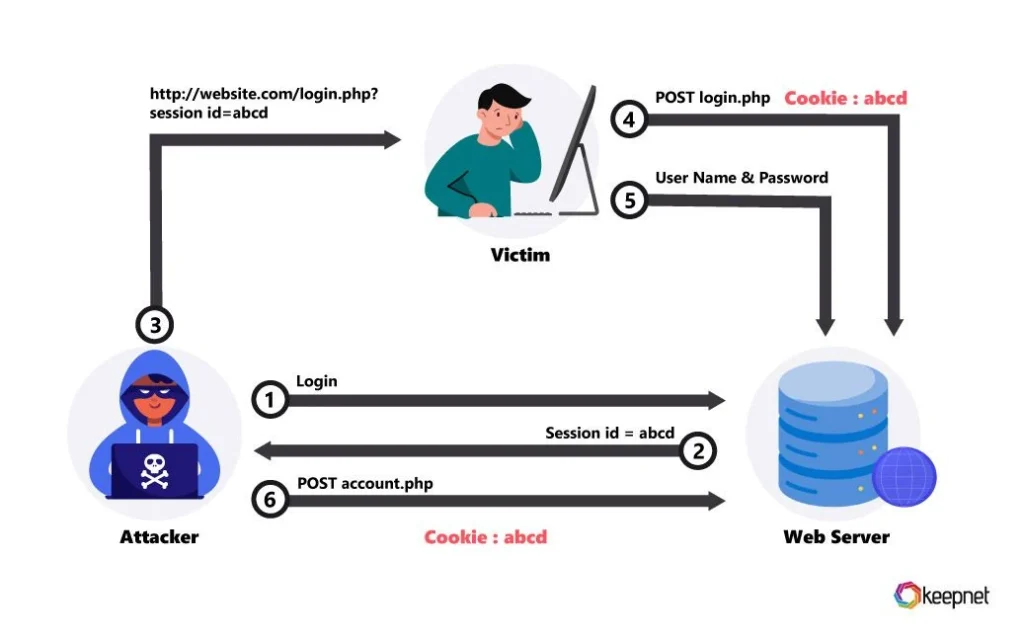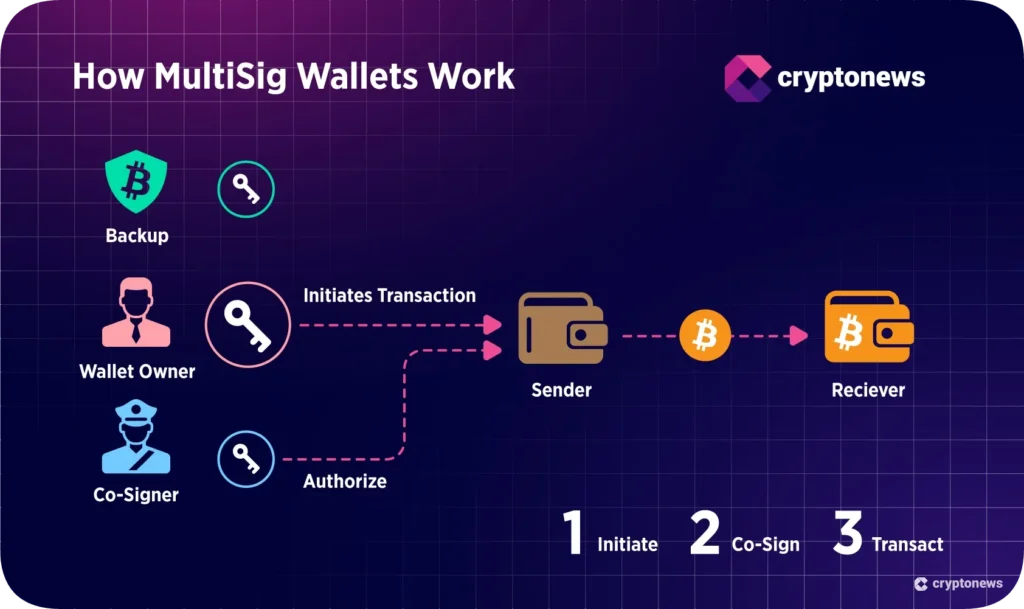The downside of using cryptocurrency is the constant security risk that comes with holding or trading digital assets. Hackers and scammers are always looking for loopholes, which makes protecting your funds a serious challenge.
To help you stay protected, we’ve gathered the best practices for storing cryptocurrency and keeping your digital coins safe from unauthorized access and theft.
This article focuses on how to create and maintain a secure Bitcoin wallet.
Whether you hold a small amount of Bitcoin or manage a large crypto portfolio, security should always be your top priority. That’s why we’ve outlined 13 simple and effective steps to secure your Bitcoin wallet and safeguard your investments for the long term.
How to Secure Bitcoin Wallet?
Unlike traditional banks, once your crypto is gone, there’s no central authority to recover it. That’s why you must follow essential steps to protect your wallet from hackers, malware, and even your own mistakes. Here are some of the precautions you must follow.
1. Set a Powerful Password
A weak password is one of the biggest reasons behind compromised accounts, which is why it tops our list. But why is this so critical?
The answer is simple: most people reuse weak, predictable passwords across multiple platforms. You’re not alone; millions of users make the same mistake.
For example, a non-technical person might choose passwords like
- 123456789
- Bob12345
- Bipinrai125
- 1994John
- Their own name or even a pet’s name
At first glance, these might look unique, but for advanced software and high-speed computers, such passwords are effortless to crack.
So, how can you create a strong password to maintain a secure Bitcoin wallet?
The key is to avoid personal information (like names, birthdays, or pet names) and instead take advantage of the wide range of characters available on your keyboard. A strong password should be:
- At least 16 characters long.
- A mix of uppercase and lowercase letters, numbers, and special symbols.
For example: @heRM!>/4duhe29l
This type of password is far more resistant to brute-force attacks and gives your crypto wallet an extra layer of protection. Remember, the stronger your password, the harder it is for hackers to compromise your secure Bitcoin wallet.
If you think you cannot guess this password, click here to generate a strong password.

2. Use 2FA Security to Secure Your Bitcoin Wallet
If you haven’t enabled two-factor authentication (2FA) yet, do it right away. 2FA is one of the most effective ways to strengthen your account security and protect your funds.
It adds an extra layer of verification on top of your password, making it much harder for hackers to gain access.
Here’s how it works: after entering your username and password, you’re asked to provide an additional piece of information, usually a temporary code sent via SMS, email, or an authenticator app like Google Authenticator or Authy. This ensures that only you can access your wallet, even if someone else manages to steal your password.
If a platform only requires a password without offering 2FA, the risk of being hacked is significantly higher. That’s why enabling 2FA is a non-negotiable step for maintaining a secure Bitcoin wallet.
It’s also important to understand that not all 2FA methods are equal. Some are stronger than others; for example, app-based or hardware-key authentication provides far better protection than SMS codes, which can be vulnerable to SIM-swapping attacks.
By combining a strong password with 2FA security, you’re building a solid defense system that keeps your secure Bitcoin wallet far safer than relying on a password alone.

3. Set a Mobile SMS Alert (OTP)
Another layer of protection you may encounter is the one-time password (OTP) system, which sends a unique code to your registered mobile number each time you log in. By linking your phone number to your Bitcoin or crypto wallet, you add another step for verification before accessing your funds.
However, not every wallet supports this feature. The reason is that OTP delivery often depends on international SMS services, which can be costly and unreliable. Some wallets simply avoid offering it due to these challenges.
We generally do not recommend relying solely on mobile OTP for securing your wallet.
OTPs sent via SMS can sometimes be delayed, leading to login frustrations, and they can also be intercepted in certain cases, such as SIM-swapping attacks.
That said, if your wallet offers this feature and supports your country, enabling SMS OTP can still add an extra layer of protection.
4. Use a Personal Email Address
Your email address is often the first point of attack for hackers, making it a critical factor in protecting your funds. Many Bitcoin and crypto users sign up for multiple platforms with the same email, which leads to an overload of spam, phishing emails, and malicious links. These risks can compromise the security of your wallet if you’re not careful.
To minimize exposure, always use a personal or separate email address exclusively for your Bitcoin and crypto wallets. This ensures that wallet-related notifications don’t get mixed up with promotional emails or suspicious messages, helping you quickly identify legitimate communication.
Additionally, if you suspect your data may have been leaked, you can check whether your email and password are part of a breach by using a reliable “data leak checker” tool. Identifying leaks early gives you the chance to update your credentials before hackers exploit them.

5. Email Verification Alert
Email verification is one of the most common but often overlooked security features in crypto. Almost every Bitcoin wallet or crypto platform offers it, yet many users forget to activate or properly set it up.
By enabling email verification alerts, you ensure that every login attempt or sensitive action on your wallet—such as withdrawals or security changes—requires confirmation via your email address. This creates an additional checkpoint that prevents hackers from gaining instant access to your funds, even if they manage to steal your password.
Think of it as a digital gatekeeper: unless the action is verified through your email, no changes can be made. This small step adds significant protection to your secure Bitcoin wallet, minimizing the chances of unauthorized access and potential loss.
6. Keep an Eye on Browser Extensions
Browser extensions are convenient tools, but they can also pose hidden security risks, especially when you’re accessing sensitive accounts like your crypto wallet. Many extensions run in the background and may collect data or expose vulnerabilities that hackers could exploit.
To protect your funds, always review the permissions granted to your installed extensions. Avoid installing unnecessary add-ons, and if you do use them, ensure they come from trusted sources only.
For maximum safety, disable browser extensions whenever you’re performing critical actions, such as logging in or transferring funds. This minimizes the chance of data leaks or malicious scripts interfering with your session.
Keep in mind that this step is most relevant if you access your wallet through a PC browser. Taking precautions with extensions significantly reduces risks and helps maintain a secure Bitcoin wallet.

7. Keep Private Keys Offline
Most decentralized wallets provide a private key or a recovery phrase, usually 12–20 words, that is crucial for accessing and recovering your funds. When setting up your wallet, the platform will prompt you to verify and write down this key offline.
By storing your private keys offline, you protect your assets even if your device is lost, stolen, or accidentally wiped. This offline storage ensures that no hacker can access your wallet through online breaches, malware, or device theft.
It’s essential to implement physical security measures—like keeping your written keys in a safe or secure location. Remember, your private key is the ultimate access point to your crypto and losing it could mean losing your funds permanently.
8. Secure Your Bitcoin Wallet with a PIN Lock (Mobile)
If you are using the Bitcoin mobile wallet app, then enable this feature and set a PIN code. By setting a personal identification number (PIN) code, you can shield your wallet not only from unauthorized access but also from individuals within your social circle, including friends, family, and children.
When setting up your PIN lock, it is essential to choose a strong and memorable PIN code. Avoid using easily guessable codes, such as your birthdate. or sequential numbers.
You can also use biometric authentication options, such as fingerprints. or facial recognition. These features give you an extra layer of security. your wallet.
9. Use Your Own Internet Connection
Public Wi-Fi networks, no matter how fast or convenient, are one of the easiest targets for hackers. Locations like cafes, airports, or hotels often have unsecured networks that cybercriminals can exploit to access your devices and intercept sensitive information.
To protect your assets, always use a private and secure internet connection when accessing your crypto wallet. A trusted connection helps safeguard your Bitcoin Wallet, along with other sensitive information such as credit card details and personal data, from potential cyber-attacks.

10. Avoid Unknown or Suspicious Links
We strongly suggest that you do not open or click on suspicious links that arrive in your email inbox. Many emails may look normal, but they can contain hidden links designed to steal your details or give hackers access to your Bitcoin wallet.
You can quickly identify potentially harmful emails by looking out for a few red flags: unusual senders, strange email addresses, urgency to take action, poor grammar and spelling, or unwanted links and attachments.
If you receive this type of email, change your email and Bitcoin wallet password immediately. If possible, transfer your funds to another secure Bitcoin wallet until you’re confident your account is safe.
11. Set Limits for Everyday Withdrawals
This is a small but effective step to improve the security of your Bitcoin wallet. By setting daily, weekly, or monthly withdrawal limits, you can control how much cryptocurrency can be moved at once.
Setting withdrawal limits is a simple yet powerful measure that adds extra protection to your funds. Even if someone gains access to your wallet, these limits help prevent them from draining your entire balance in one attempt.
In case you lose control of your wallet, this precaution ensures that a portion of your Bitcoin or other cryptocurrencies remains safe in your secure Bitcoin wallet.
12. Delete Cookie Data
This is an unseen threat. You have already noticed this when you visit the website of something. When you visit the website, it sends you a notification that says, “This website uses cookies,” which means the website is storing a small amount of data in a browser, so when you revisit the website, it will read browser cookies, including the data in your Bitcoin wallet.
After logging in to your wallet, make sure you delete your browser history. and cookie data, so other websites will not read your browser history.

13. Use Multi-Signature if Available
The concept of multi-signature (multi-sig) adds an advanced layer of protection to your Bitcoin wallet. With this feature, transactions require approval from multiple people, usually 3 to 5, before they can be completed.
This setup prevents theft because no single person or compromised device can carry out a transaction alone. For example, if one user attempts to send Bitcoin, they need approval from the other designated members before the transaction is processed.
While this feature is extremely useful for businesses, organizations, or shared accounts, it may not be necessary for casual traders. Still, if supported, enabling multi-signature is an excellent way to ensure a secure Bitcoin wallet and reduce the risk of unauthorized transfers.

Conclusion
Before depositing any crypto into your wallet, make sure you follow these 12–13 essential steps to keep your Bitcoin safe. Some of the features listed above may not be available in every wallet, but if your wallet offers additional or advanced security settings, be sure to enable them. Every extra layer of protection matters, regardless of whether you hold a small or large amount of cryptocurrency.
I hope this guide has helped you understand how to properly secure your Bitcoin or crypto wallet.







